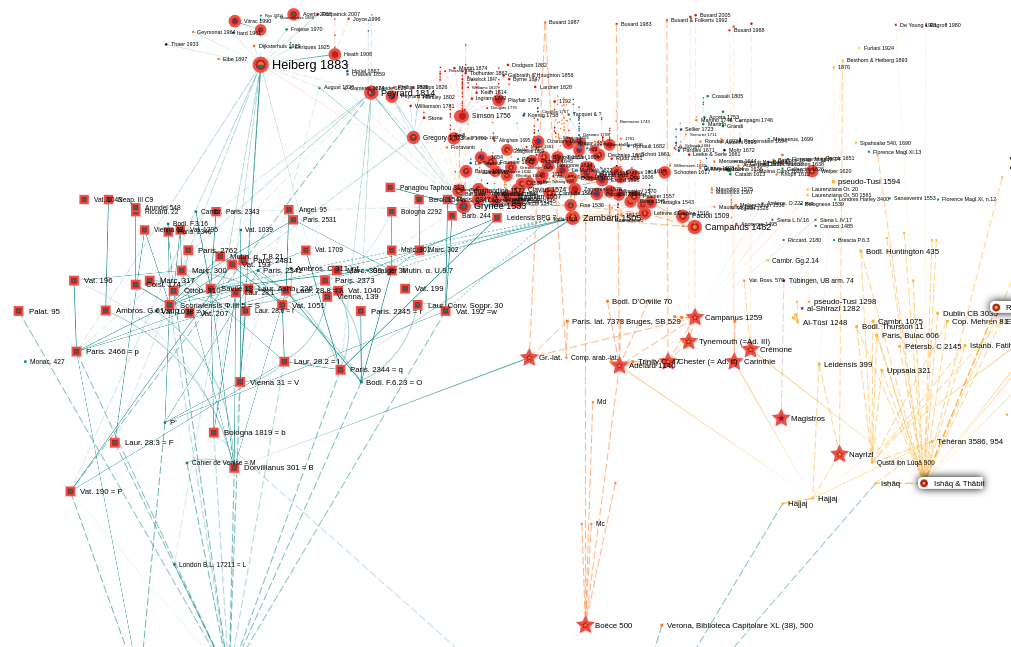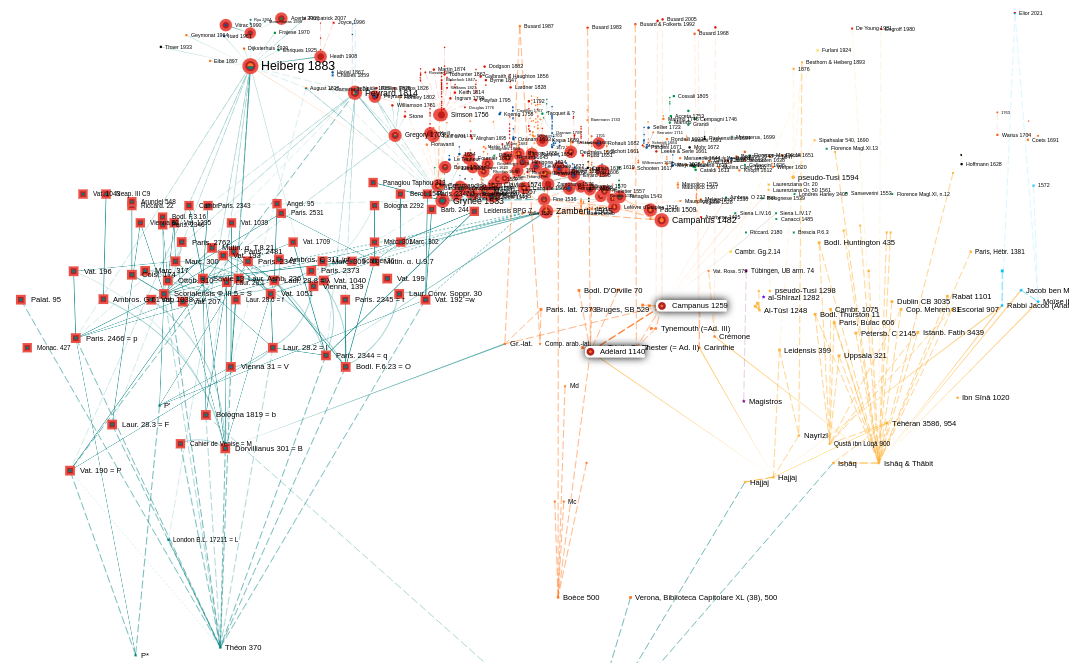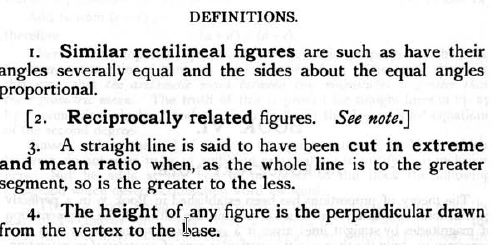
MÉδÉE
Manuscripts and Editions
ofEuclid's Elements
Keywords
Bernard Vitrac & Alain Herreman
To report any correction, suggestion, or request, please contact: alain.herreman@univ-rennes.fr
Here we provide the complete list of keywords along with their definitions, distinguishing between the extended and the punctual keywords (see scientific overview).
For example, the keywords “D5 = D” and “D5 = NC” distinguish the texts in which the “axiom of parallels” is either a Demand or a common Notion. The keywords associated with the same aspect reveal all the recorded values of that aspect. Thus, for the “axiom of parallels,” there are two values.
However, it is not possible to record the values of all aspects considered for all nodes unless one significantly limits either the aspects or the nodes. To achieve this, the common part of the keyword expressions associated with the same aspect allows determining all the nodes for which the value of that aspect has been recorded. Thus, the expression “D5 = ” can be used to identify the nodes for which the status assigned to the “axiom of parallels” has been recorded.

Nodes for which the status of the “axiom of parallels” has been recorded
N.B.: Since the search is not only based on keywords, it is possible, although unlikely, that nodes contain the string “D5 = ” for another reason…
Moreover, a portion of these aspects has been systematically recorded for a subset of the nodes. These aspects are indicated by an asterisk (*) in the first column of the table, and these nodes are labeled with the keyword “Mcc” (which stands for “Mots-clefs complets” in French). Thus, when focusing on these nodes and restricting the graph, each aspect must have a value assigned to it. Conversely, for other nodes or other aspects, the absence of a keyword may simply indicate that the respective aspect has not been recorded for those nodes. The results of graph analysis should be interpreted accordingly.

Nodes for which the distinguished aspects (*) have been systematically recorded (“Mcc”)
On the contrary, for the other nodes or aspects, the absence of a keyword may simply be due to the fact that the value of the considered aspect has not been recorded. The results of the research on the graph must be interpreted accordingly.
Pour les manuscrits l’assignation d’une valeur pour un aspect donné est limitée à la portion du texte conservée. Ainsi, nous ignorons l’état originel des axiomatiques du premier Livre (qui inclut un certain nombre d’aspects) des manuscrits grecs mutilés en leur début (Vat. gr. 1038, Laur. Plut. 28.8, Paris. gr. 2342, Ambros. C 311 inf. et, dans une certaine mesure l’Oxon. Bodl. Auct. F.6.23), même s’il n’y a aucune raison de douter que lesdites axiomatiques existaient initialement). Dans certains cas, on peut même espérer que la philologie et les liens de filiation permettraient de les restituer. Mais ces témoins sont traités ici dans leur état actuel de conservation. C’est pourquoi le Vat. gr. 190 s’est vu attribuer 52 mots clefs et le Marc. gr. Z 309 (= Livres I-II) seulement 18. Cela étant, ces deux nœuds ont le mot-clef “Mcc” (“mots-clefs complets”).
It is not always possible to capture the diversity of values for an aspect while maintaining the required simplicity for keywords. For this reason, we have, for example, abandoned the idea of providing the number of definitions for each of the Books. Determining whether a statement is present in a version can become intricate. For instance, should we consider that the definition of figures in inverse relation from Book VI is in the main text of Heath’s 1956 translation?:

Definitions from Book VI in Heath’s 1956 translation
In this case, we have retained both values and assigned two keywords, despite their contradictory definitions. As such, this node will be selected in both instances, which aligns with the expected usage of keywords.
The numbering of the statements is that of the Heiberg 1883-188 and Vitrac 1990-2001 editions.